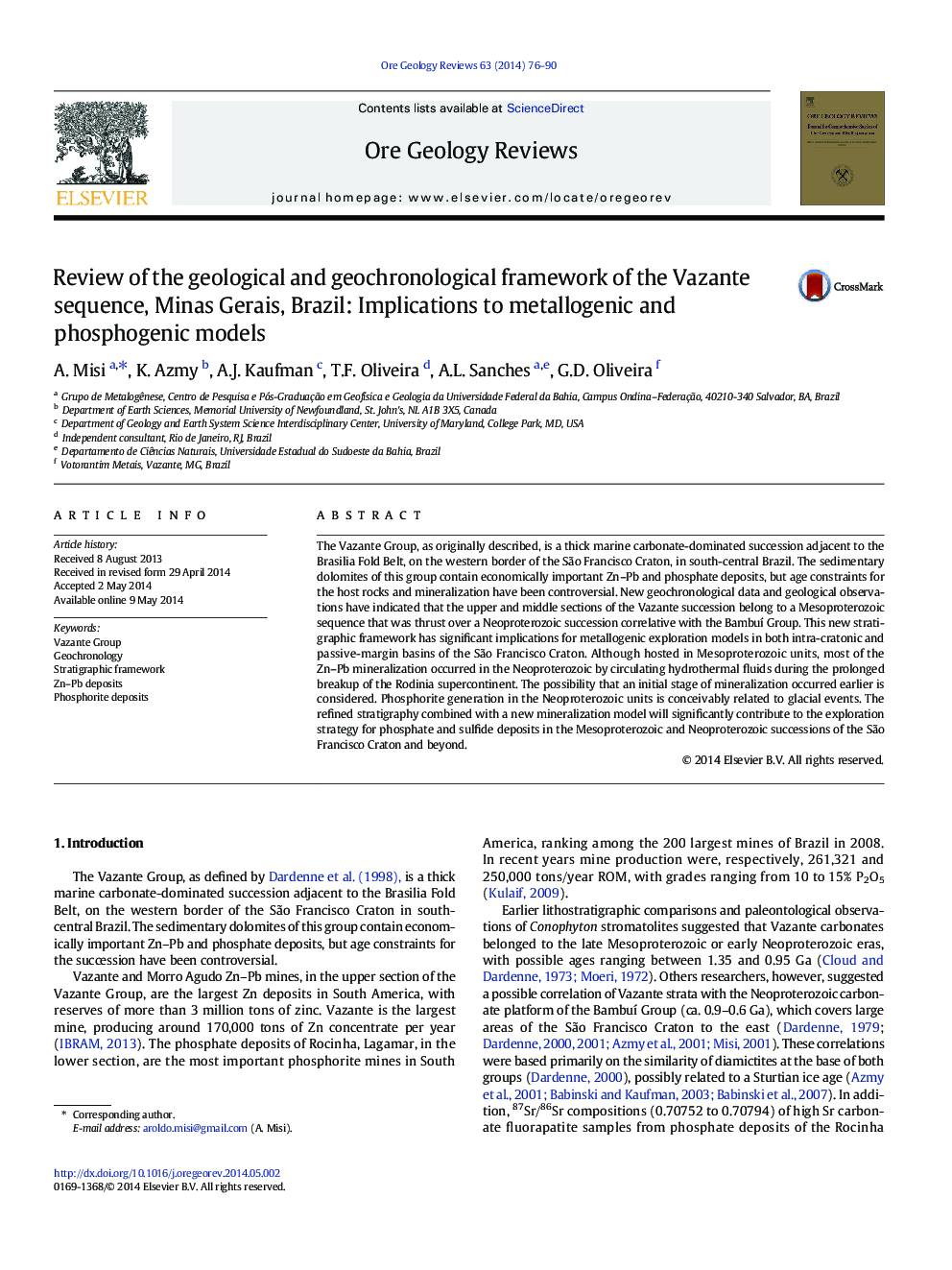| Article ID | Journal | Published Year | Pages | File Type |
|---|---|---|---|---|
| 4697197 | Ore Geology Reviews | 2014 | 15 Pages |
•The Vazante Group, as it was originally defined, i not a normal succession.•Upper Mesoproterozoic strata are thrusted over Neoproterozoic successions.•Although hosted in Mesoproterozoic units, most Zn-Pb mineralization is Neoproterozoic.•Phosphorites of Rocinha and Lagamar correlate to those of the Bambuí Group.
The Vazante Group, as originally described, is a thick marine carbonate-dominated succession adjacent to the Brasilia Fold Belt, on the western border of the São Francisco Craton, in south-central Brazil. The sedimentary dolomites of this group contain economically important Zn–Pb and phosphate deposits, but age constraints for the host rocks and mineralization have been controversial. New geochronological data and geological observations have indicated that the upper and middle sections of the Vazante succession belong to a Mesoproterozoic sequence that was thrust over a Neoproterozoic succession correlative with the Bambuí Group. This new stratigraphic framework has significant implications for metallogenic exploration models in both intra-cratonic and passive-margin basins of the São Francisco Craton. Although hosted in Mesoproterozoic units, most of the Zn–Pb mineralization occurred in the Neoproterozoic by circulating hydrothermal fluids during the prolonged breakup of the Rodinia supercontinent. The possibility that an initial stage of mineralization occurred earlier is considered. Phosphorite generation in the Neoproterozoic units is conceivably related to glacial events. The refined stratigraphy combined with a new mineralization model will significantly contribute to the exploration strategy for phosphate and sulfide deposits in the Mesoproterozoic and Neoproterozoic successions of the São Francisco Craton and beyond.
